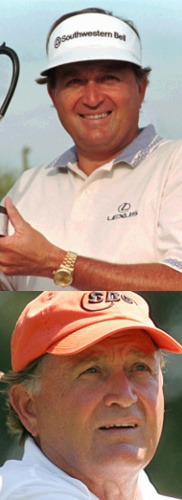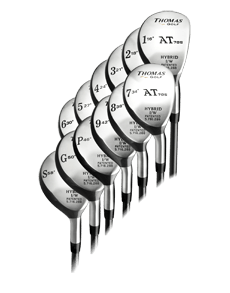
This year, Augusta National will be abuzz with the 30th anniversary of Jack Nicklaus’ historic win for the ages at the 1986 Masters. Nicklaus’ win, in arguably the most dramatic final round in major championship history, deserves to be richly remembered and widely chronicled.
Ten years before Nicklaus’ win, Raymond Floyd owned Augusta National for four days like few golfers had before or since. Floyd opened Thursday’s play with a sizzling seven under par 65 and followed it up on Friday with a six under par 66. Floyd was 13 under par through the first 36 holes of the tournament. Floyd was especially lethal on Augusta National’s par-five holes. Through the first three rounds of the tournament, Floyd was under par on every single par-5, recording 11 birdies and an eagle.
At this point, Floyd was essentially on cruise control. He shot a two-under par 70 in the third round and took an eight shot lead into Sunday’s final round where he closed with another two under par 70, winning the title by six shots over runner up Ben Crenshaw. Floyd finished 17 under par for the tournament with a score of 271. This record stood until Tiger Woods shot 18 under par during his breakthrough 1997 victory which was tied by Jordan Spieth at the 2015 Masters.
So, on this 40th anniversary of Floyd’s historic week, let’s take the time to tip our cap to a tremendous competitor who maybe never got the recognition he was due as he played in an era dominated by Nicklaus, Tom Watson, Lee Trevino, Johnny Miller and Gary Player.
Floyd won four majors and was known as one of the best front-runners in championship golf. He was a hard player to catch once he sniffed out the lead on golf’s biggest stages. His peers remember his concentration and his stare as he focused intently on the job at hand.
Raymond’s secret weapon that magic week was his 5-wood, a club he added to his bag specifically for Augusta’s par-5’s. The 5-wood allowed Floyd to hit higher-trajectory, softer-landing approach shots that would stop more quickly on Augusta’s firm, fast greens. While today’s longest players are hitting mid, or even short irons into some of these greens (especially #15), in the 1970’s players faced longer approaches into these greens – that meant 1, 2 and 3-irons or, in the case of Floyd, the 5-wood.
Floyd didn’t employ the 5-wood on any other golf course that season and it wasn’t in his bag at other events. He simply practiced hitting high, soft cuts while he was at home. Floyd began playing the Masters in 1965 and was tired of seeing his long-iron approaches bounce through the greens into the rough or even hazards as is the case of the lake behind the 15th green that fronts Augusta’s par-three 16th hole.
Raymond Floyd would go on to win another PGA Championship and the 1986 U.S. Open. He remained very competitive at Augusta National well into his late 40’s, finishing in 2nd place in 1990 and 1992. He ended his career with 11 top-ten finishes at the Masters. He also played on 7 U.S. Ryder Cup teams and captained the team in 1985 and 1989.
Perhaps Rickie Fowler has been reading up on Floyd’s 1976 exploits. He asked Cobra to retool his 5-wood for the Masters and they responded by developing a “Frankenstein” Cobra King F-6 Baffler which includes three rails along the sole. The new Cobra 5-wood is designed to produce higher trajectory, softer landing shots for Fowler – sound familiar?
Raymond Floyd, a legendary golfer, often gets overshadowed by other prominent figures in the sport. However, his accomplishments and dominance in golf should not be forgotten. Here are some key highlights of Raymond Floyd's career:
- Major Championship Success: Floyd won a total of four major championships throughout his career. He claimed the 1969 PGA Championship, the 1976 Masters Tournament, the 1982 PGA Championship, and the 1986 U.S. Open. His victory at the 1986 U.S. Open made him the oldest winner in the tournament's history at the time.
- Ryder Cup Excellence: Floyd had a remarkable record in the Ryder Cup, representing the United States on numerous occasions. He played in the prestigious tournament a total of eight times and was a member of winning teams seven times. Floyd's Ryder Cup record includes a remarkable 12-4-3 individual match record.
- Consistent Performances: Floyd's career was characterized by consistent performances and numerous top-ten finishes in major championships. He finished in the top ten of major championships 22 times, indicating his ability to compete at the highest level consistently.
- World Golf Hall of Fame: In recognition of his outstanding career, Raymond Floyd was inducted into the World Golf Hall of Fame in 1989. This honor solidifies his status as one of golf's greats and recognizes his contributions to the sport.
- Overall PGA Tour Success: Floyd recorded a total of 22 PGA Tour victories during his career. This places him among the elite players who have achieved significant success on the professional circuit.
While Raymond Floyd may not receive the same level of attention as some of his contemporaries, his achievements on the golf course speak for themselves. His major championship victories, Ryder Cup performances, consistency, and Hall of Fame induction make him a true legend of the game. It is important to recognize and appreciate his contributions to the sport and the impact he has had on the golfing world.
Q&A:
- Q: How many times did Raymond Floyd win the Masters? A: Raymond Floyd won the Masters Tournament once, in 1976.
- Q: Was Raymond Floyd a dominant player at the Masters? A: While Raymond Floyd won the Masters once, he was not considered one of the most dominant players in the tournament's history.
- Q: Who are the most dominant players at the Masters? A: Golfers like Jack Nicklaus, Tiger Woods, and Arnold Palmer are considered the most dominant players at the Masters, each winning the tournament multiple times.
- Q: How did Raymond Floyd perform in other major golf tournaments? A: Raymond Floyd had a successful career in golf, winning four major championships, including the U.S. Open, The Open Championship, and the PGA Championship.
- Q: What made Raymond Floyd's victory at the 1976 Masters significant? A: Floyd's victory in 1976 was remarkable because he held off challenging competitors, including Ben Crenshaw and Ben Hogan, to win by eight strokes.
- Q: How many top-10 finishes did Raymond Floyd have at the Masters? A: Raymond Floyd had a total of 10 top-10 finishes at the Masters throughout his career.
- Q: Did Raymond Floyd have a special affinity for Augusta National Golf Club? A: While Floyd did not have multiple Masters victories, he played well at Augusta National and had several top performances over the years.
- Q: Did Raymond Floyd have a strong rivalry with other dominant Masters players? A: Raymond Floyd had friendly rivalries with other top golfers of his era, but he did not have a rivalry on the same level as the legendary players like Nicklaus and Palmer.
- Q: How does Raymond Floyd's Masters performance compare to other major championships? A: Floyd's victory at the Masters was one of his most significant wins, but he had equally impressive performances in other major championships.
- Q: What is Raymond Floyd's overall legacy in golf? A: Raymond Floyd is remembered as one of the great players of his generation, with a successful career that included 22 PGA Tour victories and several major championships.
- Q: Did Raymond Floyd have any notable Masters moments or records? A: While he didn't set any specific Masters records, Floyd's eight-stroke victory in 1976 was a memorable moment in the tournament's history.
- Q: How did Raymond Floyd's career evolve after his Masters victory? A: Raymond Floyd continued to be a competitive force on the PGA Tour and achieved further success in major championships after his Masters win.
- Q: Did Raymond Floyd's Masters win have any significant impact on the tournament or golf in general? A: Floyd's win in 1976 was significant in his own career, but it did not have a transformative impact on the Masters Tournament or golf as a whole.
- Q: How is Raymond Floyd remembered by golf fans and fellow players? A: Raymond Floyd is highly respected within the golf community and is admired for his skill, consistency, and sportsmanship on the course.
- Q: What is Raymond Floyd's most significant contribution to the game of golf? A: Raymond Floyd's most significant contribution to golf is his exemplary play and sportsmanship, serving as a role model for aspiring golfers and a respected figure in the sport.





